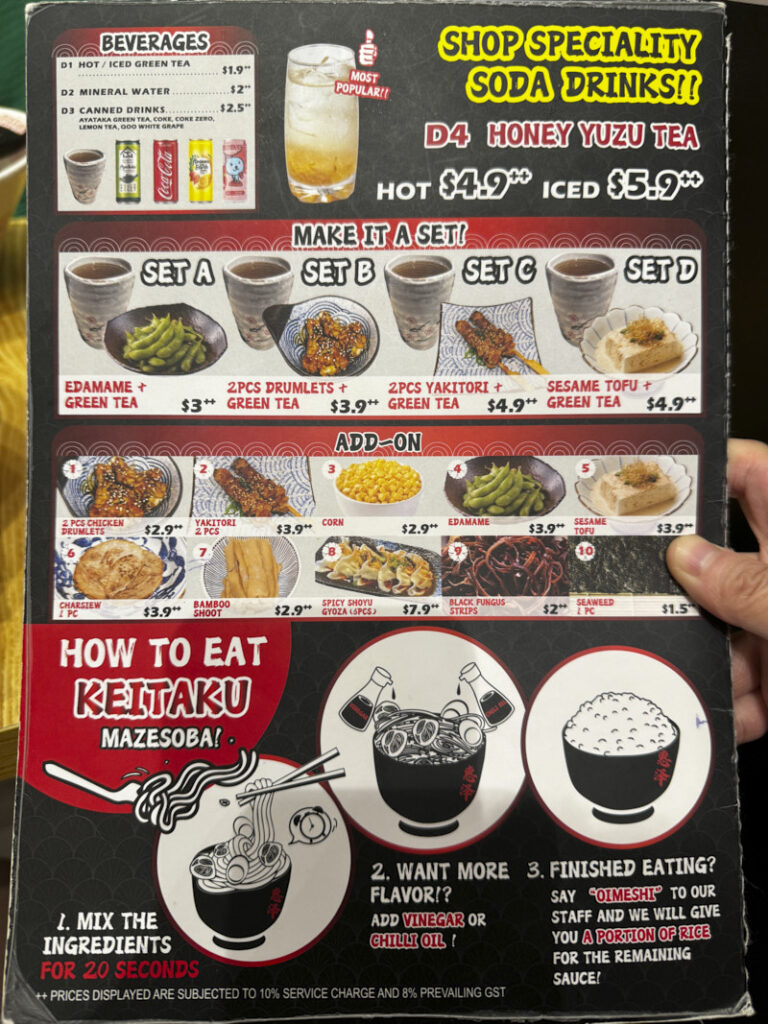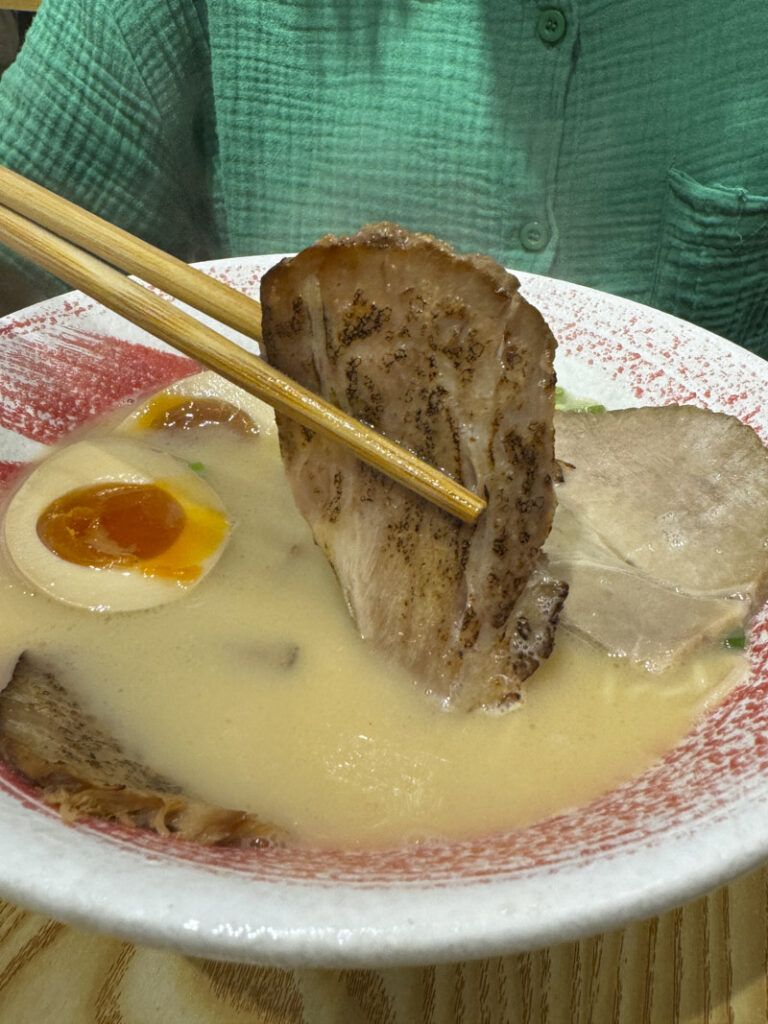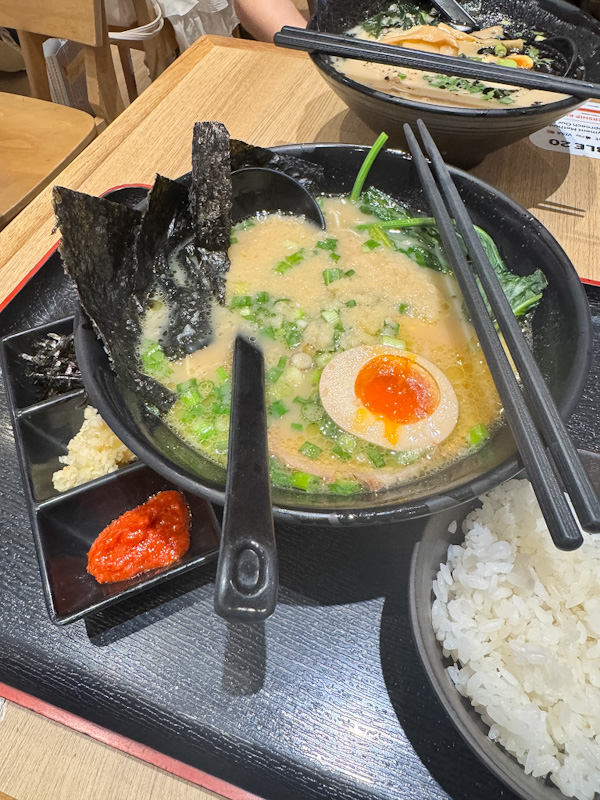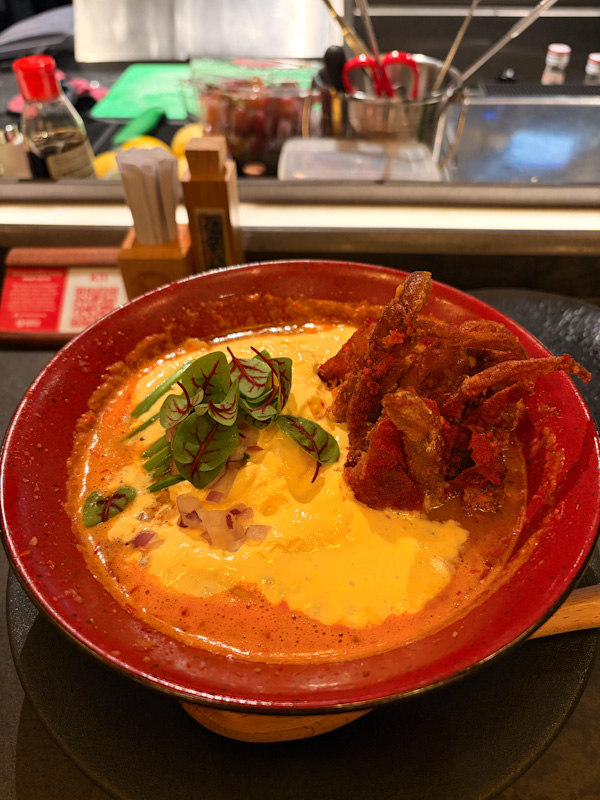Notes about Dry Ramen / Tsukemen / Mazesoba
Mazesoba is mostly about toppings and has little broth, while tsukemen serves noodles and broth separately. In tsukemen, you dip the noodles in the broth as you eat, but in mazesoba, there’s little to no broth, and you mix the various toppings directly with the noodles.
WHAT WE ATE
- Signature Minced Chicken Chashu Mazesoba, 90/100 (3 Feb 2024, Marina Square)
- 2PCS Chashu Egg Tonkotsu Ramen, 55/100 (3 Feb 2024, Marina Square)





Signature Minced Chicken Chashu Mazesoba – 90/100
Noodle: 30/35
These noodles are reminiscent of udon – thick, round, and delightfully wavy. They offer a firm yet springy and chewy texture, with a pleasing earthy sweetness. Despite their vibrant yellow color, there’s no hint of an unpleasant kansui taste.
Sauce and Soup: 35/35
Since it’s a dry noodle dish, let’s consider the sauce and soup as a unit. The sauce boasts richness and a significant salty kick on its own, but when combined with the thick noodles, it’s a match made in culinary heaven. Adding a dash of vinegar and chili oil, as per the instructions, elevates the umami factor to new heights, layered with a mild spicy kick. As for the soup, it’s akin to a creamier, cloudier rendition of the familiar Bak Kut Teh or Chinese Pig Stomach Soup, brimming with intense peppery and savory notes that truly whet the appetite.
Meat: 15/20
The meat offerings come in two varieties. First, the sizable slice of pork chashu, nicely grilled on one side, imparting a delightful smoky flavor. Although marinated well, the texture leans slightly firm and dry in some areas. Then there’s the minced chicken meat, boasting a heavier marination that complements its minced form perfectly, resulting in a tender yet chewy texture.
Topping: 10/10
Among the additional toppings, the bamboo shoots strike a balance between crunchiness and tenderness, devoid of any unpleasant aftertaste. The negi adds a refreshing crunchiness, indicative of its freshness. Last but certainly not least, the onsen egg plays a pivotal role, acting almost as a sauce component by thickening its consistency. Its sweetness harmonizes beautifully with the other ingredients, acting as the glue that binds the dish together – quite literally.



2PCS Chashu Egg Tonkotsu Ramen – 55/100
Noodles: 15/35
The noodles chosen here are thin and straight, reminiscent of Hakata-style ramen. They offer an adequate bite and maintain a firm texture. However, they lack a distinct flavor profile, resulting in noodles that are somewhat neutral in taste.
Soup: 20/35
The soup presents a creamy, cloudy appearance with a subtle layer of oil. However, it deviates from the traditional Tonkotsu flavor, leaning more towards paitan noodles, which typically have a chicken base or a blend of chicken and Tonkotsu. Consequently, the soup tends towards the sweeter side with faint hints of porky richness. Despite its light taste, the bitterness of the aburi-ed pork becomes pronounced in the aftertaste.
Meat: 10/20
The chashu utilized here resembles that of Mazesoba – grilled on one side with generous portions. While the tender portions are delectable, the tougher parts tend to become excessively dry, particularly when soaked in the soup for an extended period.
Toppings: 10/10
The toppings feature a well-marinated egg with a gooey yolk, accompanied by a subtle caramel-like aftertaste, which may appeal to some palates. Additionally, there’s a generous serving of negi and crunchy black fungus, contributing to a satisfying overall topping experience.
DISCLAIMER
One man’s meat is another man’s poison.
Find out more about our palettes and how we evaluate our ramen here. 😉


